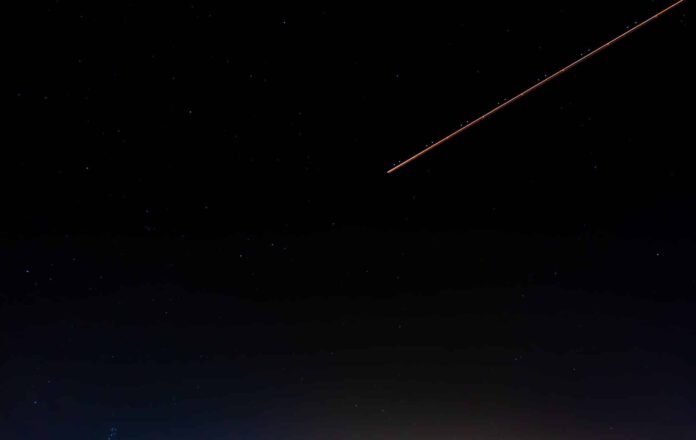
December: A time for the Geminids!
December is upon us, and with it comes the spectacle of the Geminids meteor shower! Prepare for a (hopefully) breathtaking celestial display.
In the early hours of December 15th, following the night of December 14th, there’s going to be a party in the night sky. The Geminids meteor shower will reach its peak activity around 17:30 on December 14th, meaning that a few hours later, around 01:00 on December 15th, the most meteors per hour can be seen. The weather conditions this time around are promising, so we can look forward to dozens of ‘falling stars’ illuminating the night sky.
Dozens of shooting stars
In many regions, we can probably expect to enjoy about 50 to 65 meteors per hour. When we include the meteors from other showers and sporadic meteors, we can expect a total of about 55 to 75 ‘falling stars’ per hour at a dark, clear sky. Almost three times as many meteors can be seen in a place with less light pollution compared to heavily urbanized areas.
The Geminids
The Geminids are the second largest annual meteor shower in the night sky. This meteor shower is named after the constellation Gemini because the star rain seems to come from there. In December, this constellation stands above the eastern horizon at night and above the western horizon in the morning. The peak of the Geminids is quite brief, less than 24 hours, which sometimes results in less than ideal conditions like excessive moonlight or cloud cover obstructing our view. However, this time around, the moon will not cause any problems. Whether the weather gods will be favorable is something we will have to wait and see.
Previous Years
This year, we can look forward to seeing significantly more shooting stars than last year when there were an estimated 25-36 meteors per hour. The year before that, the conditions were much more favorable, with the opportunity to spot an impressive 110 ‘falling stars’ per hour! Even in 2020, the number of meteors was impressive, around 100 per hour.
Shooting Stars
The term ‘falling stars’ is commonly used to refer to the Geminids. Despite the image these words create of stars rapidly plunging towards Earth – that’s thankfully not what’s happening. No, this event is a direct result of the heavily polluting space journey of the asteroid Phaethon. Phaethon left behind a massive dust cloud of tiny space debris, which just happens to be in the path of our Earth. Every year, we pass through this cloud at around the same time, causing much dust to enter our atmosphere. This space debris enters Earth’s atmosphere at high speed, causing it to slow down and heat up sufficiently to glow and create a light flash. Ultimately, the dust burns up in the atmosphere. So, perhaps ‘Galactic Vacuuming’ would be a more accurate term, though that lacks a certain romance.
This is probably the most violent form of cleaning we can witness here on Earth. This space debris enters our atmosphere at speeds of up to 125,000 kilometers per hour, which is more than 40 times faster than a bullet. The Geminids are characterized by their large numbers, their brightness, their yellowish color, and the short trails they leave behind. Even during this spectacular event, there’s no need to worry about burning space debris landing on your head: most meteors burn up at a height of between 70 and 90 kilometers above the Earth’s surface. In extremely rare cases, they are seen burning up at a height of 40 kilometers above the Earth’s surface.
Intensity
Interestingly, even though the Geminids can be seen with the naked eye, they were only first spotted in 1862. Since their discovery, the intensity of the event has increased. However, expectations are that the number of meteors will decrease in the coming century until the event is eventually no longer visible. Consequently, this presents an excellent excuse to venture outdoors on the night of December 14th and the early hours of December 15th to behold the spectacle, while you still can.
Here’s a tip: locate a place without any strong lighting. Lie flat on your back with your feet facing south and look up. It takes a while for your eyes to adjust to the darkness-so give it about half an hour before you start seeing the shooting stars. Given the prediction of 65 meteors per hour, after this period, you should be seeing more than one per minute. Don’t forget, it’s quite chilly at night during the winter months, so make sure you’re wearing a warm jacket and bring along a blanket or sleeping bag for added comfort. Once you’re settled in and comfortable, the magic moment awaits: the cosmic show in which Mother Earth’s obsessive cleanliness plays a starring role will unfold before your eyes. Happy viewing!











